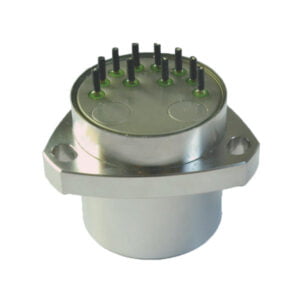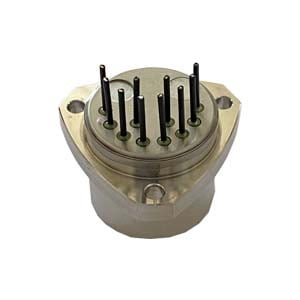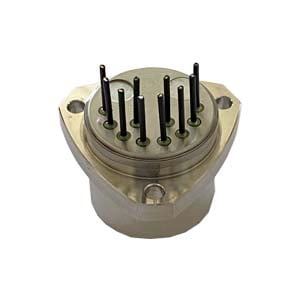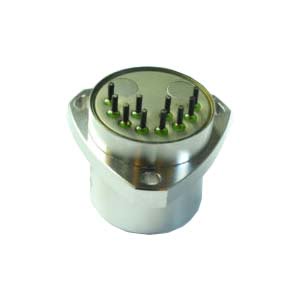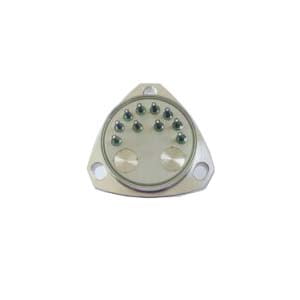An accelerometer is an instrument that measures acceleration. Acceleration measurement is an important subject in engineering technology. When the object has a large acceleration, the object and the instruments and equipment carried by it and other objects without relative acceleration are subjected to forces that can produce the same large acceleration, that is, dynamic loads. To know the dynamic load, you need to measure the acceleration. Secondly, to know the spatial position of the instantaneous aircraft, rockets and ships, its acceleration can be measured continuously through inertial navigation , and then the velocity component is obtained through integral calculation, and the position coordinate signal is obtained by integrating again. The measurement results of the three coordinate directions synthesize the motion curve and give the spatial position of the vehicle at each instant. Another example is that some controls give the spatial position of the vehicle at each instant. For example, in some control systems, acceleration signals are often required as part of the information required to produce control effects, and the problem of continuous measurement of acceleration also occurs. A device that can continuously give an acceleration signal is called an acceleration sensor.
The components of common accelerometers are as follows: housing (fixed to the measured object), reference quality, sensitive components, signal output devices, etc. Accelerometers require a certain amount of range and accuracy, sensitivity, etc. These requirements are often somewhat contradictory.
Accelerometers based on different principles have different ranges (from several g to hundreds of thousands of g), and their sensitivities to catastrophic acceleration frequencies are also different. Common accelerometers are based on the following principles:
1.The reference mass is connected to the housing by a spring . The relative displacement between the housing and the housing reflects the magnitude of the acceleration component. This signal is output via the potentiometer as a voltage.
2.The reference mass is fixed by the elastic thin rod and the shell, the dynamic load caused by acceleration deforms the rod, the strain resistance wire senses the size of the deformation, and its output is an electrical signal proportional to the size of the acceleration sub-disk
3.The reference mass is fixedly connected to the housing through the piezoelectric element. The dynamic load of the mass exerts pressure on the piezoelectric element. The piezoelectric element outputs an electrical signal proportional to the pressure, that is, the acceleration component.
4.The reference mass is connected to the housing by the spring and placed inside the coil. The displacement that reflects the magnitude of the acceleration component changes the inductance of the coil, thereby outputting an electrical signal proportional to the acceleration.
In addition, there are servo-type accelerometers, in which a feedback loop is introduced to improve the accuracy of the measurement. In order to measure the acceleration vector in the plane or space, two or three accelerometers are required, each measuring one acceleration component.
The accelerometer for measuring aircraft overload was one of the first aircraft instruments to be used. They are also commonly used in aircraft to monitor engine failure and fatigue damage to aircraft structures. Accelerometer is an important tool to study the flutter and fatigue life of various aircraft in flight test. In inertial navigation system, high precision accelerometer is one of the most basic sensitive elements. The performance of accelerometers in different applications is very different. The high precision inertial navigation system requires the resolution of accelerometers up to 0.001g, but the range is not large. The accelerometer for measuring aircraft overload may require a range of 10g, but the accuracy is not high. Therefore, Ericco designed ER-QA-03A high performance quartz accelerometer and ER-QA-01A aerospace quartz for the application characteristics in this field The characteristics of accelerometer are: ER-QA-03A's bias repeatability is 10-50μg,scale factor repeatability is 15-50 PPM and class II non-linearity repeatability is 10-30μg/g2. ER-QA-01A's bias repeatability is 10μg,scale factor repeatability is 10 PPM and class II non-linearity repeatability is 10μg/g².
From this, we can simply understand the definition, structure and application of the accelerometer in aircraft overload, if you want to know more about the accelerometer related knowledge. Please click here,get more https://www.ericcointernational.com/accelerometer
More Technical Questions
1.Why do we Need Accelerometer?
2.Quartz Accelerometer VS MEMS Accelerometer
3.What Effect Does Temperature Have on Quartz Flexible Accelerometer?
4.Multi-Dimensional Understanding of High Precision Quartz Accelerometer
5.What is the Purpose of the Accelerometer Senor?
6.Application of Quartz Accelerometer in UAV and Positioning System
Products in Article
